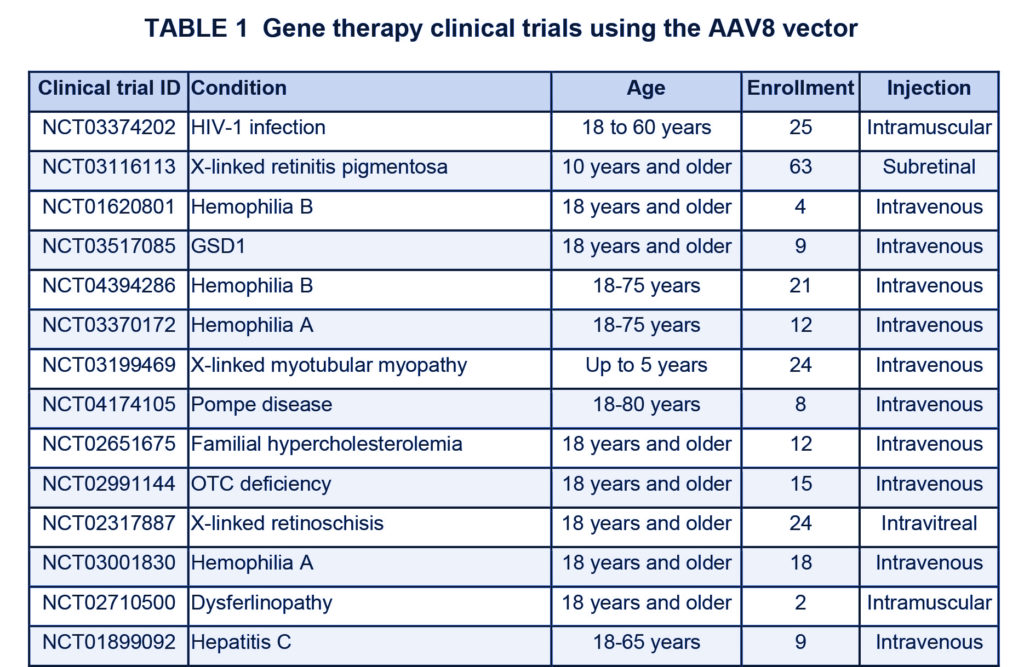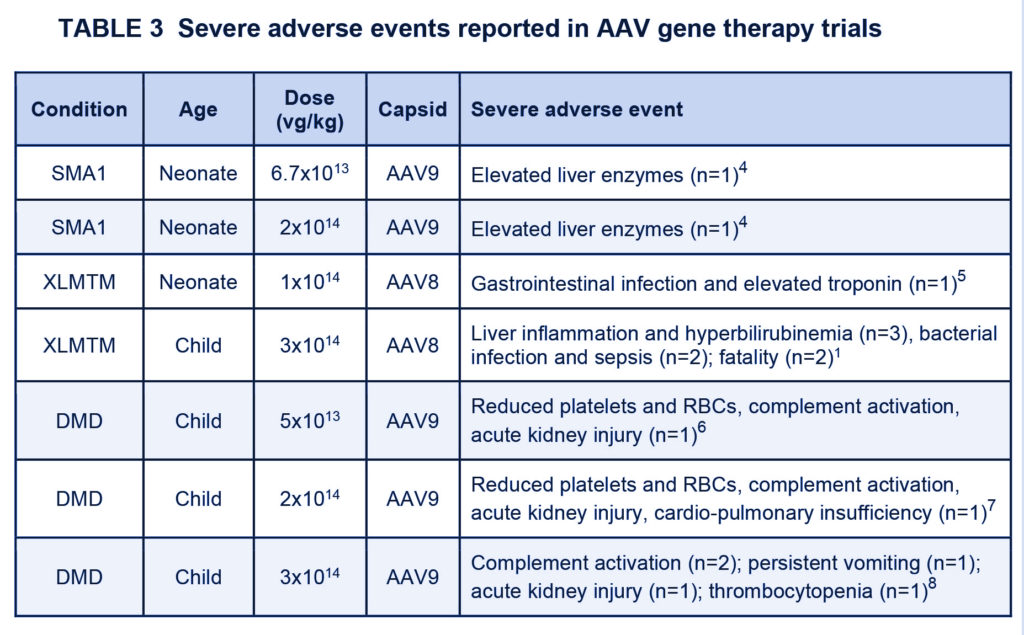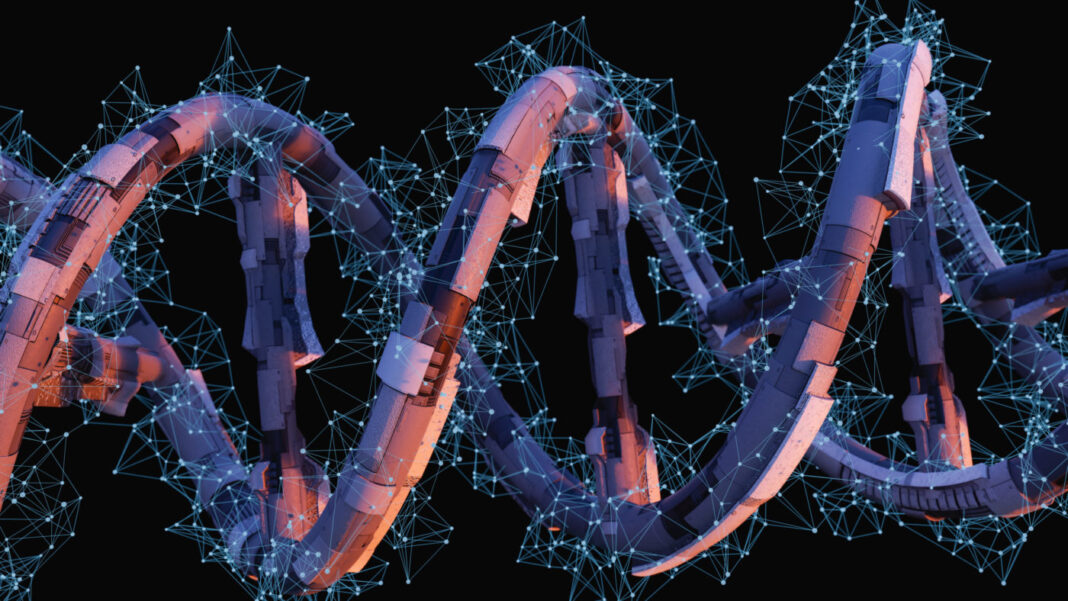
Assistant Adjunct Professor, UCSF
A week before the 2020 virtual American Society for Gene & Cell Therapy conference, a tragedy took place in the rare disease and gene therapy communities. On May 6, the gene therapy company Audentes (acquired last year by Astellas Pharma) notified the X-linked myotubular myopathy (XLMTM) community that a child in the ASPIRO trial (NCT03199469) had died from sepsis. An investigation began with the help of FDA regulators to determine whether this was related to treatment with a high-dose adeno-associated virus (AAV) therapy.1
Unfortunately, ten days ago (on June 23) a second child in the same cohort, receiving the same high dose of AAV, also died of sepsis following treatment.1 It’s important in pivotal moments like this that we quickly and calmly sort out what happened and put in place safeguards to prevent this from happening again. Patient trust in our therapies is paramount—without it we have nothing.
Based on the limited data available,1 here is what we know so far:
The disease: XLMTM
XLMTM is a rare neuromuscular disease in newborn boys. Patients experience severe muscle weakness and hypotonia which leads to respiratory failure and feeding challenges. It is often fatal. The disease is caused by mutations in the MTM1 gene, which codes for myotubularin, an essential protein for normal skeletal muscle function.
The capsid: AAV8
The experimental gene therapy AT-132 that expresses the therapeutic MTM1 payload for XLMTM was packaged in an AAV8 capsid. This is a very commonly used capsid serotype in gene therapy. According to ClinicalTrials.gov, of the 180 interventional AAV gene therapy trials conducted to date,2 14 have used AAV8 (Table 1).3 Importantly, of the nearly 250 patients treated to date with AAV8 for various indications, no other serious adverse events of this grade have occurred, highlighting the hitherto excellent safety profile of this capsid.

The dose: 3×1014 vector genomes per kilogram bodyweight
The two young boys who died were both in the high-dose group of the ASPIRO trial. They received 3×1014 vector genomes per kilogram bodyweight (vg/kg) by intravenous administration. This is among the highest doses of any AAV ever administered to either adults or children (see Table 2). According to statements by the trial sponsor1, both boys were at the higher end of the age cutoff (less than 5 years of age).

As an example, if we assume these boys were 4 years old, and at the lower range of normal body weight for this age given their condition, then they likely weighed ~13.5 kg (about 30 pounds) and would have received a dose in excess of 4×1015 vg. In other words, that’s just over 4 quadrillion viruses. That’s a measure of the genome-containing particles. The amount of empty capsids in the AT-132 lots are not publicly available and these would increase the ‘AAV8’ dose burden even higher. (The gene therapy field does not have a universal standardized assay to titer AAV vectors, thus these (and all AAV doses) should be considered approximate).
The severe adverse event: death from sepsis
Three boys in the high-dose AT-132 cohort developed severe hepatobiliary disease (damage to the liver and bile ducts); two of these boys died from bacterial infections and sepsis. Although XLMTM is a skeletal muscle disease, the medical complications often include many other organ systems, including the liver. Both boys who died reportedly had some form of pre-existing hepatobiliary disease (which kind was not specified). This could be relevant, as nearly all AAV therapies traffic to the liver when delivered intravenously, regardless of the eventual target organ. The liver must therefore manage these large viral doses, which could certainly cause toxicity, especially if the liver is damaged beforehand.
Relatedly, several other severe adverse events (of varying severity) have occurred in patients receiving high dose systemic AAV (Table 3). These have largely resulted from innate immune responses (e.g. inflammation and complement activation) and cellular immune responses to vector days-to-weeks following intravenous administration.

What we don’t know
It is not clear how the AAV8 vector in the ASPIRO trial was manufactured, what purification methods were used, and whether changes could improve safety at this dose. We don’t know what levels of pre-existing anti-AAV8 capsid antibodies the boys had other than that they met trial inclusion criteria (not publicly disclosed). There is no standardized assay for measuring pre-existing anti-AAV capsid levels, which remains a glaring challenge for the field. This is important as capsid:antibody complexes may have activated complement in several of the above trials.9 Additionally, it has not been disclosed what pre-existing hepatobiliary disease these boys had,1 but presumably it was not considered too serious as the listed trial exclusion criteria included “clinically significant underlying liver disease.”
Parting thoughts
It is time to talk about high-dose AAV. While the conversation has begun,10 these deaths require all of us to determine how to use high-dose AAVs safely—if at all. In the short term, additional preclinical studies are needed to better predict safer doses and biomarkers of toxicity, as well as the influence of parameters like empty capsid levels, impurities resulting from manufacturing methods, and different purification strategies.
In the long term, we need to shift our focus from “how can we safely use high doses” to “how can we design the vector so we don’t have to.” This will require advances on multiple fronts, including:
- engineered capsids that better home to target organs
- new promoters and regulatory elements for tissue/environment-specificity and toggleable control
- safer manufacturing methods that simultaneously scale to meet the production demands but also reduce impurities (host proteins and undesired nucleic acids)
- increased understanding of AAV biology during vector production
- novel and more stable inverted terminal repeat (ITR) genome structures
- better purification methods to further reduce the impurity burden
- innovative strategies to avoid immune responses
- new methods of administration
Beyond engineering, we must also consider whether the use of body weight is appropriate to determine dosing. For example, should two children who weigh the same be given the same vector dose if they have significantly different levels of disease severity? Or what about the difference between a child who has undergone puberty such that the target organ is done developing compared to an infant? Or even if they are of a different sex? Numerous groups have now observed pronounced sexually dimorphic liver transduction with AAV,11,12 such that males experience significantly greater transduction and thus may see higher expression than females. For sexually dimorphic transduction, at least we have some data to reference as we decide AAV dosages. But for questions around dosing for different developmental states and disease severities we are severely lacking in preclinical data.
The deaths of these two young boys is devastating and our hearts go out to their families and the XLMTM community. As scientists and clinicians, we owe it to these boys to make sure this doesn’t happen again. I hope more details will be made public as soon as possible so the gene therapy community can learn what happened and engineer solutions to best move the field forward.
Nicole Paulk, PhD ([email protected]), is Assistant Adjunct Professor, Dept Biochemistry & Biophysics, UCSF, San Francisco CA 94143.
References
- https://www.joshuafrase.org/get-involved/recensus-study.php.
- Search of: AAV | Interventional Studies – List Results – ClinicalTrials.gov.
- Search of: AAV8 | Interventional Studies – List Results – ClinicalTrials.gov.
- Mendell, J. R. et al. Single-Dose Gene-Replacement Therapy for Spinal Muscular Atrophy. New Engl. J. Med. 377, 1713–1722 (2017).
- https://www.prnewswire.com/news-releases/audentes-announces-positive-interim-data-from-first-dose-cohort-of-aspiro-a-phase-12-clinical-trial-of-at132-in-patients-with-x-linked-myotubular-myopathy-300577455.html.
- https://www.solidbio.com/about/media/news/letter-to-the-duchenne-community-about-the-status-of-the-ignite-dmd-clinical-trial.
- https://www.fiercebiotech.com/biotech/solid-bio-sees-yet-another-clinical-hold-for-its-dmd-gene-therapy.
- https://investors.pfizer.com/investor-news/press-release-details/2020/Pfizers-New-Phase-1b-Results-of-Gene-Therapy-in-Ambulatory-Boys-with-Duchenne-Muscular-Dystrophy-DMD-Support-Advancement-into-Pivotal-Phase-3-Study/default.aspx.
- Wilson, J. M. & Flotte, T. R. Moving Forward After Two Deaths in a Gene Therapy Trial of Myotubular Myopathy. Human Gene Therapy (2020) doi:10.1089/hum.2020.182.
- Flotte, T. R., Editor-in-Chief. Revisiting the ‘New’ Inflammatory Toxicities of Adeno-Associated Virus Vectors. Hum. Gene Ther. 31, 398–399 (2020).
- Rumachik, N. G. et al. Methods Matter: Standard Production Platforms for Recombinant AAV Produce Chemically and Functionally Distinct Vectors. Molecular Therapy – Methods & Clinical Development vol. 18 98–118 (2020).
- Davidoff, A. M., Ng, C. Y. C., Zhou, J., Spence, Y. & Nathwani, A. C. Sex significantly influences transduction of murine liver by recombinant adeno-associated viral vectors through an androgen-dependent pathway. Blood 102, 480–488 (2003).


